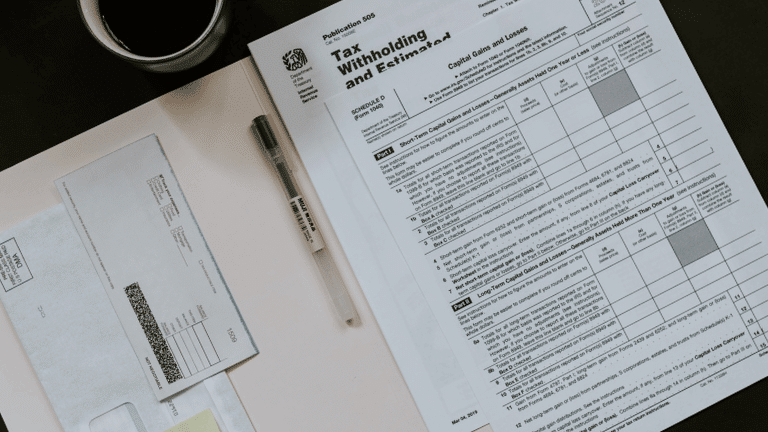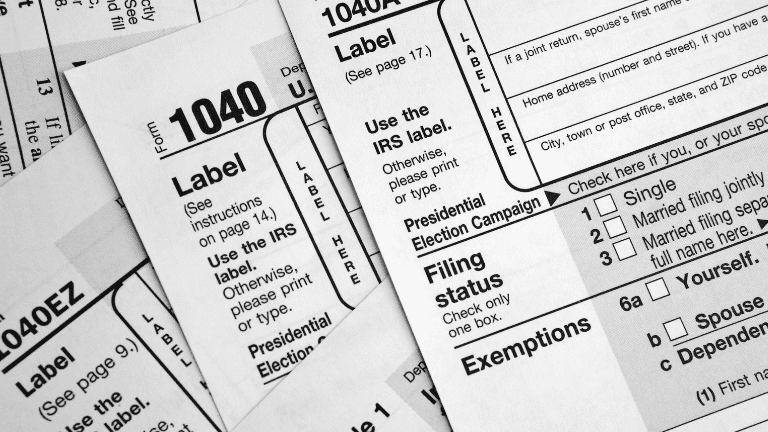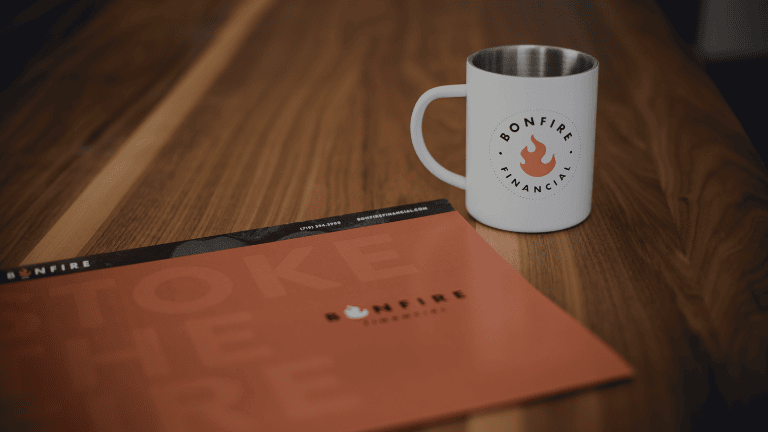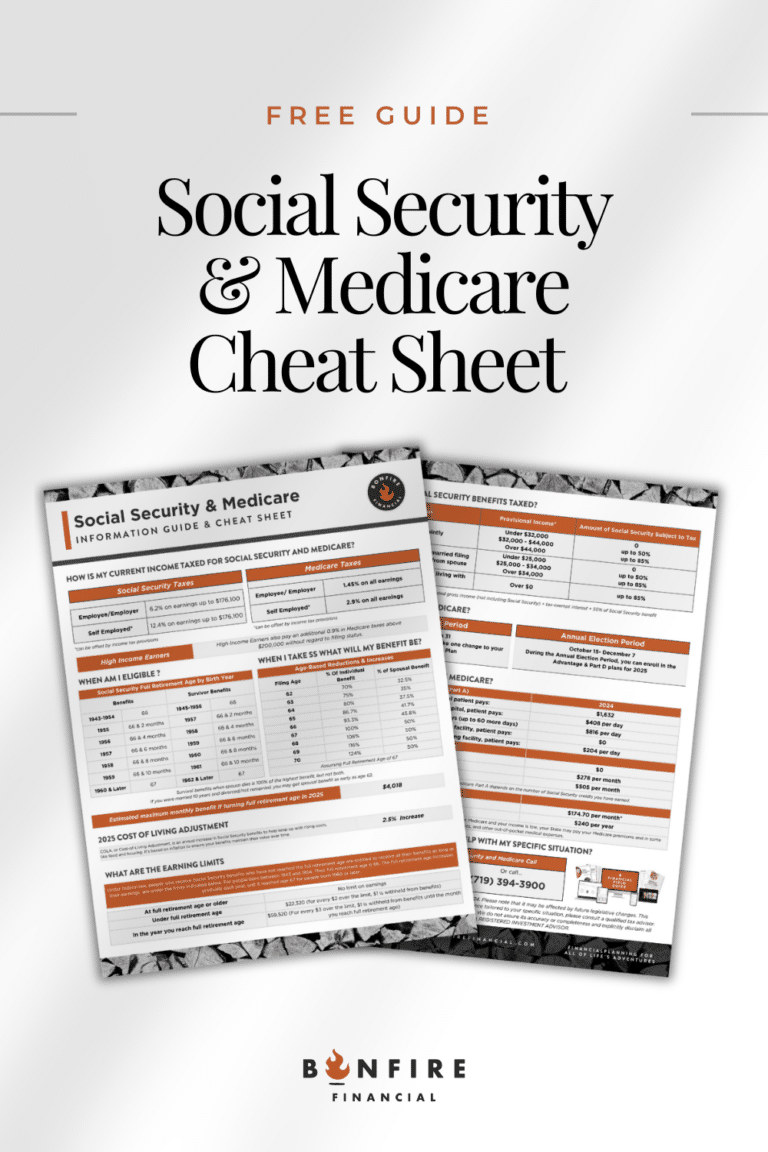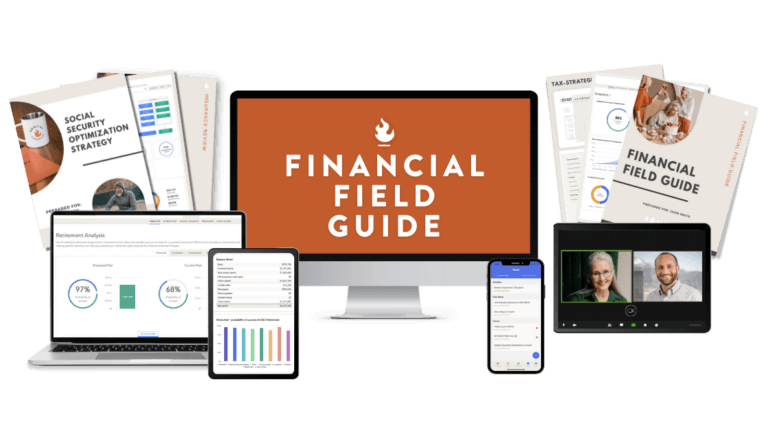HOW TO CUT TAXES NOW AND IN THE FUTURE
If you just wrote a big check to the IRS, you may be wondering how you can prepare now to cut your taxes next April. We’ve got you covered. Luckily, there are several legal ways to reduce the amount of tax you pay each year that don’t just include adjusting your withholding. Here are 10, practical and actionable, ways to help you cut your next tax bill and those in the future.
1. UTILIZE YOUR RMD FOR YOUR CHARITABLE GIVING
If you are 73 or older, donating your Required Minim Distribution (RMD) to a qualified charity is a great way to reduce your tax burden. These donations are considered a qualified charitable distribution (QCD) and will not be taxed up to $100,000 per account owner.
A qualified charitable distribution can satisfy all or part of the amount of your RMD from your IRA. For example, if your required minimum distribution was $10,000, and you made a $5,000 qualified charitable distribution, you would only have to withdraw another $5,000 to satisfy your required minimum distribution.
The more you donate in this way, the more you can exclude and cut from your taxable income This is extremely helpful since RMDs are ordinary taxable income that will often push retirees into a higher tax bracket.
Qualified charitable donations are a great way to use up your RMD if you are planning to give to charity. However, keep in mind that it must be a check sent directly from an IRA to the charity.
Schwab allows you to have a checkbook on your IRA that allows you to write such checks directly from your IRA. Be aware, that all donations need to be sent/cashed by 12/31 of the tax filing year.
QCDs can offer big tax savings, as tax rates on regular income are usually the highest. Regardless of the tax benefits, designating this income for charity is a great way to begin or expand your giving and support the causes you care most about.
2. TAKE ADVANTAGE OF TAX LOST HARVESTING
There is always a silver lining, right? For market downturns, that silver lining is tax-loss harvesting. With tax-loss harvesting, you can use your loss to cut your tax liability and better position your portfolio going forward.
Here is how it works, in its simplest form:
- First, sell an investment that is losing money and underperforming.
- Next, use that loss to reduce your taxable capital gains. This can potentially offset up to $3,000 of your ordinary income for the tax year. (Any amount over $3,000 can be carried forward to future tax years to offset income down the road).
- Last, reinvest the money from the sale into a different investment that better meets your investment needs and asset-allocation strategy.
This allows you to free up cash for new investments and mitigate a tax consequence.
As with anything tax-related, there are limitations. Please note that tax loss harvesting isn’t useful in retirement accounts because you can’t deduct the losses in a tax-deferred account. Additionally, there are restrictions on using specific types of losses to offset certain gains. A long-term loss would first be applied to a long-term gain. Then, a short-term loss would be applied to a short-term gain. You also must be careful not to violate the IRS rule against buying a “substantially identical” investment within 30 days.
The best way to maximize the value of tax-loss harvesting is to incorporate it into your year-round tax planning and investing strategy. We always recommend talking to a professional about your specific situation.
3. FUND HSA OR FSA
Health Savings Accounts (HSA) and Flexible Spending Accounts (FSA) allow pre-tax dollars to be set aside for medical, vision, and dental expenses, thus reducing your overall taxable income. Each has its own benefits.
An HSA is triple tax-advantaged, which means:
- Contributions are made with pre-tax dollars
- It grows tax-free (you can invest your contributions and earn interest)
- Can be used tax-free for eligible expenses (
Another great thing about an HSA is that you can keep it forever. Funds roll over and never expire. On the other hand, an FSA is a “use or lose it” type of account. However, an FSA is still a good option because it is funded before tax and comes out tax-free. FSA are employer-sponsored so there is often less involved with enrolling and setting up the plan. As such self-employed filers are ineligible to open able to open an FSA.
Both HSAs and FSAs are good options to help cut and reduce your taxable income.
CONTRIBUTE TO A PRE-TAX RETIREMENT ACCOUNT TO CUT TAXES NOW
Contributing to a retirement plan may be one of the simplest ways to slash what you own to the IRS. Whether a 401k or an IRA, (learn the differences here), both offer tax savings.
4. MAX OUT YOUR 401K
If your employer offers a 401(k), maximizing your contributions is an excellent way to save for retirement while reducing your tax burden. To realize benefits on your next tax bill, contribute to a Traditional 401k rather than a Roth 401k.
A Traditional 401(k) allows you to contribute pre-tax dollars, which lowers your taxable income and can significantly decrease your overall tax liability. This type of account provides immediate tax savings, making it a strong choice if your goal is to minimize your current tax bill. While Roth 401(k) contributions grow tax-free, they are made with after-tax dollars and don’t offer the same upfront benefits. Additionally, contributing enough to receive any employer match ensures you’re fully leveraging this valuable opportunity to grow your retirement savings.
5. CONTRIBUTE TO A TRADITIONAL IRA
Additionally, if you are below the income limits, you can also contribute to a Traditional IRA. They are tax-deferred, meaning that you don’t have to pay tax on any interest or other gains the account earns until you withdraw the money. Contributions to a Traditional IRA are often tax-deductible. However, if you do have a 401k or any other employer-sponsored plan, your income will determine how much of your contribution you can deduct.
6. CONSIDER A CASH BALANCE PLAN
If you are a business owner or solopreneur and have a high income, consider a cash balance plan. A Cash Balance plan is a type of retirement plan that allows for a large amount of money to go in tax-deferred and grows tax-deferred. It is a great option for owners looking for larger tax deductions and accelerated retirement savings.
Cash Balance contributions are age-dependent. The older the participant is, the higher the contribution can be. It can be an extra $60k to over $300k (based on age and income ) on top of combined 401k/ profit-sharing contributions.
An attractive feature of a cash balance plan is that the company offering the benefit can take an above-the-line tax deduction on contributions. Above-the-line deductions are great for tax savings because they reduce income dollar for dollar.
CONTRIBUTE TO AN AFTER-TAX RETIREMENT ACCOUNT TO CUT TAXES IN THE FUTURE
While a 401k, Traditional IRA, and Cash Balance Plan can help curb taxes in the near term, we also recommend planning for future tax implications to help you cut your tax bill for years to come. Roth IRAs are retirement accounts that are made up of your AFTER-tax contributions. However, they offer tax-free growth and tax-free withdrawals.
7. GROW TAX-FREE WITH A ROTH IRA
Again, Roth IRA contributions are after-tax, so you can not deduct your contributions. Nevertheless, your distribution will be tax-free and penalty-free at age 59 ½ Something your future self will thank you for! Another benefit is that a Roth IRA isn’t subject to RMD requirements either.
Your Roth IRA contribution limits are based on your filing status and income.
There are definitely some potential tax savings here, especially for those just starting out. It makes sense to pay taxes on the money you contribute now, rather than later, when your tax rate may be higher.
8. CONSIDER A BACKDOOR ROTH
A Backdoor Roth allows people with high incomes to fund a Roth, despite IRS income limits, and reap its tax benefits. Could it be right for you?
In short, you open a traditional IRA, make non-deductible (taxable) contributions to it, then move that Traditional IRA into a Roth IRA and enjoy the tax-free growth.
It is important to note that you can not have any money currently in an IRA, SIMPLE IRA, or SEP-IRA to make this work properly. There are more complexities involved in setting this up, and we recommend talking with a CERTIFIED FINANCIAL PLANNER™.
9. ROTH CONVERSION
A Roth Conversion involves the transfer of existing retirement assets from a traditional, SEP, or SIMPLE IRA, or from a defined-contribution plan such as a 401k, into a Roth IRA.
You’ll have to pay income tax on the money you convert now (at your current tax rate), but you’ll be able to take tax-free withdrawals from the Roth account in the years to come
You can also use market downturns as an opportunity to do a Roth Conversion. If your IRA goes down in value because of market fluctuations, you could convert the account to a Roth. This will allow you to pay a smaller amount of taxes because the account is down in value. Then you’ll have the money in a Roth when the market recovers, which would then be tax-free.
While there is no predicting what the tax brackets and tax rates will be in the future, if taxes go up by the time you retire, converting a traditional IRA and taking the tax hit now rather than later could make sense in the long run.
10. PAY ATTENTION TO THE CALENDAR
Lastly, from a tax perspective, there is a big difference between December 31 and January 1st. While some things, such as IRA contributions can be made up until the filing deadline, many must be done during the tax year, like qualified charitable distribution.
It is important to plan as far in advance as possible to help minimize your taxes. We recommend meeting with a tax professional and your financial advisor throughout the year.
>> Check here for the most current contribution limits, dates, deadlines and more! <<
The key to lowering your tax bill is to plan ahead and cut your tax liability in a way that makes sense for you. It’s impossible to know what regulations, changes, and updates will go into effect during any given tax season, but rest assured that we’ll be here to help you plan. Schedule a free consultation call with one of our CERTIFIED FINANCIAL PLANNER™ professionals today!
Until then, take these tips to heart and remember that reducing your taxes isn’t an impossible task.
 Client Login
Client Login